Roelly Winklaar: How To Build Big Delts
Do you know who is the most massive among all active bodybuilders? There are few notable ones – 7 times Mr. Olympia champ Phil Heath, Big Ramy, Kai Greene and Justin. But if you really want to see inhuman mass and muscle, the best example is The Dutch Beast Roelly Winklaar.
Roelly is known for his famous deltoid muscles. The Dutch Beast always focuses on maximum workouts of all three parts equally, and this explains why his deltoid muscles look so big and devastating!
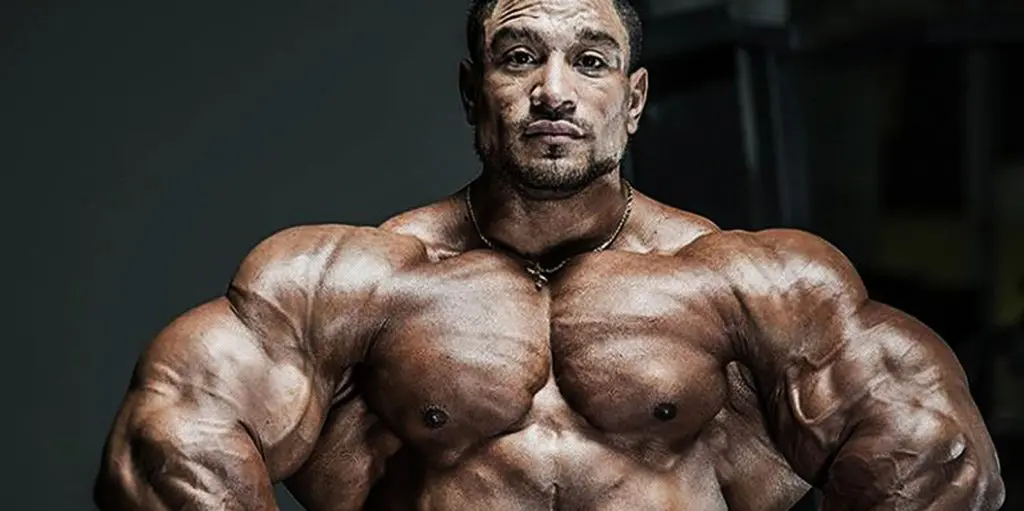
The borders of deltoid muscles are anterior part and the upper surface of the lateral third of the clavicle, acromion, and spine of the scapula. It is active in shoulder abduction, internal rotation, flexion, and extension. It is made of three parts – anterior (front) part, posterior (rear) part, and lateral (side) part.
Roelly persistently does the same delts workout, repeating six exercises over and over. He emphasizes engaging all parts of the muscle. Even if he takes the hardest dumbbells, he is still able to perform a high number of repetitions. He doesn’t like powerlifting style. Roelly mostly uses 10-12 repetitions in his sets. He claims that high training volume is better than low volume and maximum load (1-5 repetitions) if you want to build big muscles.
The Dutch Beast doesn’t support swinging movements or any kind of cheating. Locking on the top of the movement is a thing he also finds wrong. His philosophy is based around maintaining the muscle tension as long as possible. He confirms that locking on top allows your muscle to rest, which may seriously affect results.
Level Up Your Fitness: Join our 💪 strong community in Fitness Volt Newsletter. Get daily inspiration, expert-backed workouts, nutrition tips, the latest in strength sports, and the support you need to reach your goals. Subscribe for free!
According to Winklaar’s philosophy, the muscle will not grow if you rest too much. You should try to shorten rest periods for maximal results. His exercises are the same, but the grip varies.
Roelly Winklaar’s Program And Analysis
Winklaar’s Delt Routine:
| No. | Exercise | Sets | Repetitions | Rest |
|---|---|---|---|---|
| 1 | Hammer Strength Press | 2 (warm-up) 3 | 20 10-12 | 30 sec 1 min |
| 2 | Seated Dumbbell Press | 1 (warm-up) 1 (warm-up) 4 | 20 15 12 | 30 sec 1 min 2-3 min |
| 3.1 | Lateral Raise | 3 | 12 | 1 min |
| 3.2 | Overhead Lateral Raise | 3 | 12 | 1 min |
| 4 | Shrug | 4 | 10 | 2-3 min |
| 5 | Bentover Lateral Raise | 3 | 12 | 1 min |
| Rest 4-5 minutes between lateral raise and overhead lateral raise. Roelly rests longer between sets of his heavy exercises and 5-6 minutes between each exercise. |
||||
1. Hammer Strength Shoulder Press
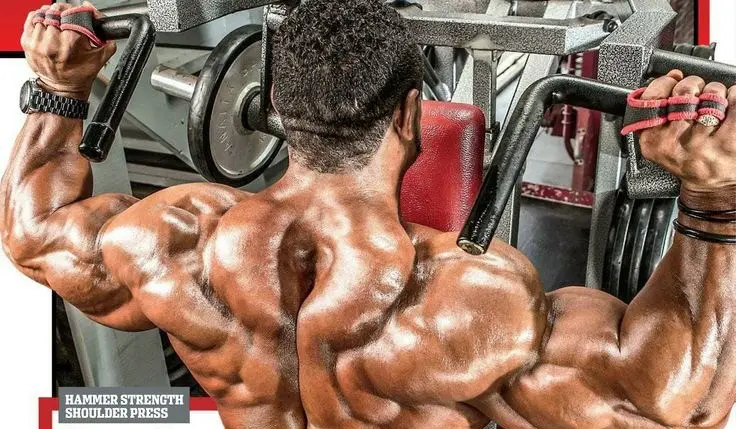
Since the exercise is performed on the machine, chances of making a mistake are reduced to a minimum. Make sure you exhale when the weight goes up.
2. Seated Dumbbell Press
Roelly Winklaar gives an advantage to dumbbells over barbells for this exercise. He thinks this is the best exercise to burn your front delts, but he also uses two sets of this exercise to warm this area properly up.
When you perform this exercise with barbells, you will activate some stabilizing muscles because of internal rotation of your shoulder – biceps, triceps, traps, and even abdominal muscles. It means this is a lot more than ordinary exercise for front deltoid muscles.
Roelly always has the assistance on one side when going with a very heavy load. He begins the exercise in the level of his ears to activate triceps muscles. His final recommendation is the use of neutral grip (palms facing each other) to activate different muscles.
Performance:
Your back must be flat to the pad, and it must remain flat when you sit down. If you work with a heavier set, make sure you have a spotter on the one hand. When no spotter is available, make sure the dumbbell is placed up on its end, on the bench beside you. When you perform the pressing motion, the movement is faster when the dumbbell goes up. There is a good reason for that – resisting gravity when the dumbbell goes down activates additional muscle groups and makes the exercise more difficult.
Mistakes and tips:
- Never throw the barbell on the ground after an exercise is finished if you want to avoid injury.
- Do not arch your back, you will hurt deep back muscles.
- Make sure both of your arms perform pressing motion simultaneously.
3. Lateral Raise / Overhead Lateral Raise
Roelly Winklaar likes this exercise because it shapes your lateral delts. He says that traditional method means to start from the waist and move to the level of your shoulder, but he adds his own twist for more efficacy. In the traditional method, you can swing the weight to the shoulder height, and Roelly thinks this is a big problem if you want big muscles.
Level Up Your Fitness: Join our 💪 strong community in Fitness Volt Newsletter. Get daily inspiration, expert-backed workouts, nutrition tips, the latest in strength sports, and the support you need to reach your goals. Subscribe for free!
Winklaar’s modification includes turning the palms up and going higher with the weights until you assume the overhead position! There is one huge advantage of this exercise – your muscles remain tensed during the whole range of motion. He also claims cheating is almost impossible with this modification.
The Dutch beast performs three traditional lateral raises, then goes to three overhead lateral raises.
3.1. Lateral Raises
Performance:
First of all, you must choose a weight your arms and shoulders can handle without swinging down. Remember, you need maximum efficacy!
Keep your hands at the sides, and slightly bend your elbows. Start lifting dumbbells, and go slowly until both dumbbells stand parallel to the ground. Winklaar claims, when it comes to the traditional lateral raise, that you will relax your muscles every time you go beyond the height of your shoulder.
Mistakes and tips:
- Watch about the starting position of your arms.
- Do not move dumbbells above the level of your shoulders.
- Make sure you don’t lower the weights too fast.
3.2. Overhead Lateral Raises
Performance:
You will need a lighter set of weights since the exercise is a lot more difficult than the traditional lateral raises.
Assume starting position with your arms to the sides, keeping the dumbbells in your arms. Your elbows are slightly bent to avoid injury. Move your elbows and arms above the level of your head, flipping your hands, until you assume an overhead position. Reverse the movement pattern back to the starting position.
Mistakes and tips:
- Don’t swing your body – its cheating.
- Do not fully extend your elbows.
- Don’t forget to flip your hands.
- Don’t lower weights too quickly.
4. Shrug
Roelly Winklaar usually balances between dumbbell and barbell shrugs. According to him, each exercise has its own benefits. He claims this exercise is one of the best to activate your traps too.
According to Roelly, this is the exercise which is done incorrectly in most gyms by more than 90 percent of people. He sees many practitioners circling at the top, which is a perfect recipe for an injury. Despite many people include this exercise on a back day, Roelly Winklaar finds it suitable for shoulder day! He is also claiming that shrug is the most direct way to hit your traps.
Performance:
The dumbbells are in your hands, two inches away from the body, arms almost fully extended. Palms facing each other, and arms slightly rotated to the inside. Move the weights up maintaining straight up-and-down position. Hold at least one second in the top position, then relax your shoulders.
Mistakes and tips:
- Don’t fully extend your arms, cause you will risk elbow injury.
- Don’t let the dumbbells touch your body, you will not fully activate your traps.
- Don’t perform internal rotation of your shoulder.
- Don’t circle with your shoulders on the top of the movement.
- Don’t lower your shoulders quickly, you will decrease muscle tension.
5. Bentover Lateral Raise
There is no better exercise to isolate posterior part of deltoid muscles. It also makes your traps and rhomboid muscles work. It will add the mass to your back muscles too.
Roelly Winklaar says you don’t need big weights to build big muscles if the form of this exercise is perfect.
Performance:
Keeping your back flat and a dumbbell in each hand, bend over, so your torso stands almost parallel to the floor. Your palms are facing each other. Dumbbells are hanging down in the starting position.
Lift your arms until parallel to the ground, then slowly lower your dumbbells, controlling the speed of movement. You can perform the exercise from the seated position if you have previously had lower back injuries.
Mistakes and tips:
- Don’t shift the weight forward and backward, this is an irregular form of the exercise.
- The weight must go directly and exactly to your sides.
- Don’t lower the weights quickly, you might hurt yourself.
Final Word
The deltoid muscle is very hard to isolate. No matter which movement is done by your shoulder, your delts have a passive or active role. Roelly Winklaar made a really good program for strong delts and back.
Try to work this exercises with passion and do the technique correctly. Remember, good technique leads to a better result. If the performance is improper, you are stealing from yourself, from your body! Look at yourself in the mirror while performing each exercise and do not select a line of lower resistance, and you will build king-size delts!

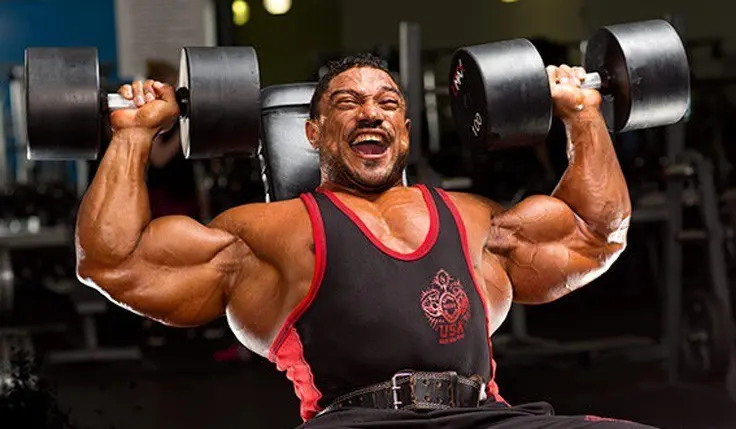
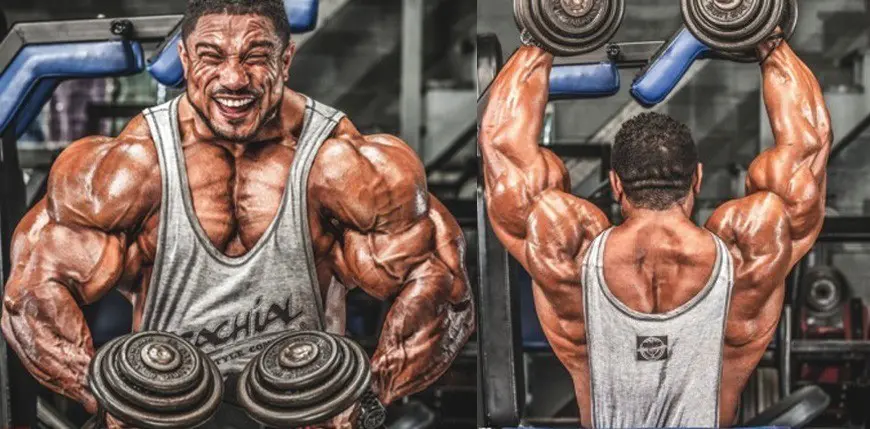






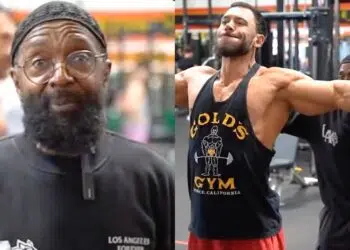
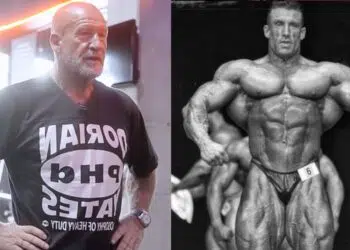

how come no mention of the steroids?
Out of sight, out of mind? But almost every one uses if they even hope to have a chance to win against the rest! And no one wants to admit they are “cheating”. Especially when there is money to win, yes fame and greed topples honesty and personal integrity almost every time. Our sport is being ruined and corrupted. Phony as hell!